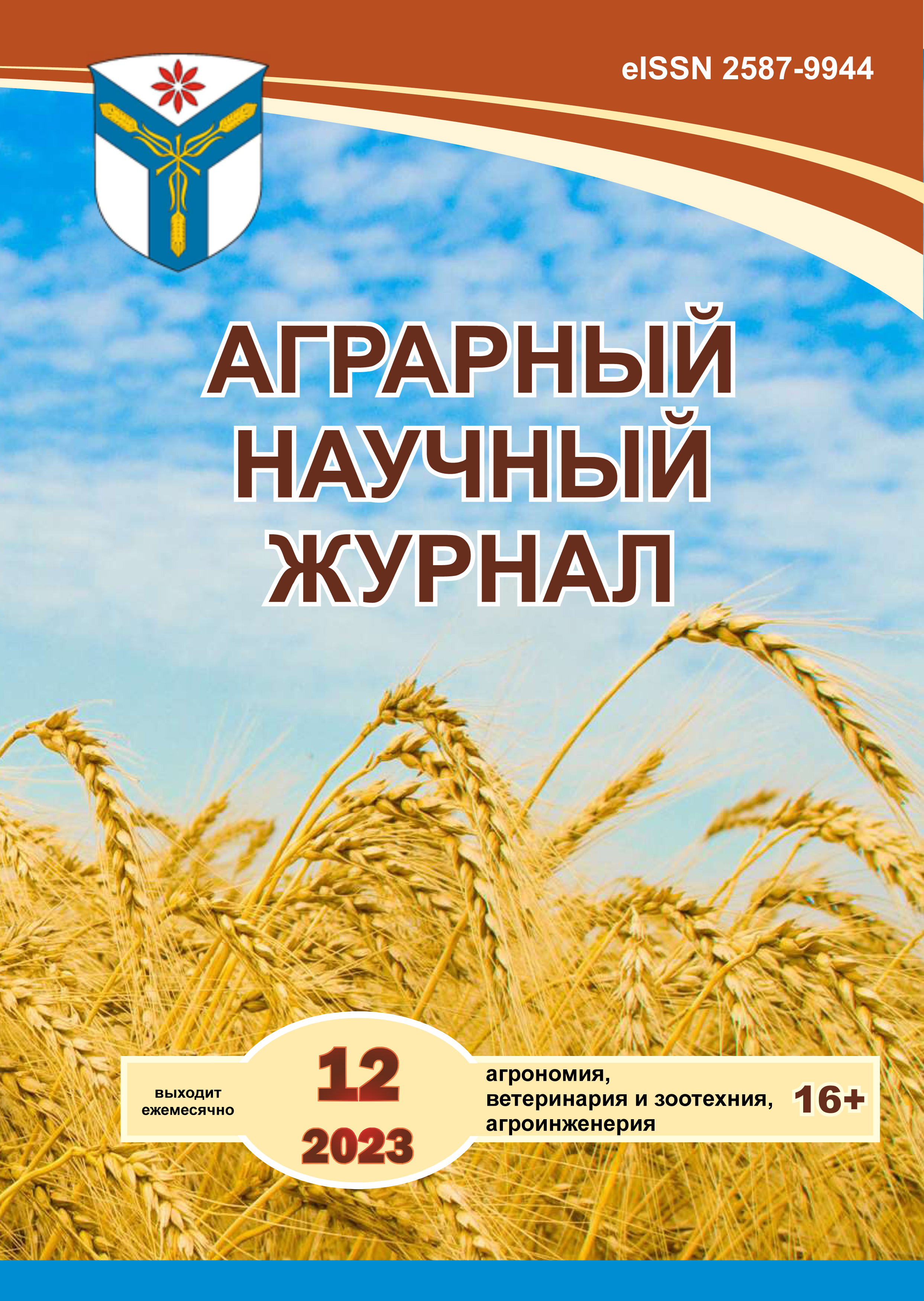Economic and biological characteristic of the new winter triticale variety Georg
DOI:
https://doi.org/10.28983/asj.y2023i12pp23-27Keywords:
triticale, breeding, variety, grain yield, yield structure elements, preharvest sproutingAbstract
The article presents the main methods and study of a new variety of winter triticale Georg. Selection work was carried out at the Federal State Budgetary Scientific Organization “Federal Center of Agriculture Research of the South-East Region”. The variety was bred by the method of intervarietal hybridization within the Triticale genus, followed by a single selection from the hybrid F2Aquarius/ADP-2//Modus. The characteristic of the variety according to the most important economically valuable traits are given in comparison with the varieties Zubr and Valentin 90 admitted for cultivation in the Nizhnevolzhsky region. The direction of grain use is grain fodder. Variety - ferrugineum. According to the competitive variety testing the grain yield of the new variety was 6.2 t/ha, which significantly exceeds the Zubr variety by 1,9 t/ha and the Valentin 90 variety by 1.5 t/ha. In terms of "mass of 1000 grains", the Georg variety is inferior to both standards. The variety is distinguished by a higher productive bushiness in comparison with the standards - 465 pcs/m2, in the varieties Zubr and Valentin 90 - 344 and 307 pcs/m2, respectively. The variety is resistant to lodging. The height of the straw of the plants of the variety is 110.7 cm and does not differ from that of the Valentin 90 variety, but is lower in comparison with the Zubr variety by an average of 21.3 cm. The full-scale weight of the Georg grain is 732g/l. This indicator is lower than that of the Zubr variety by 9g/l and higher than that of the Valentin 90 variety by 31.3g/l. The grain germination index of the new variety and standards did not differ and indicated their susceptibility to pre-harvest grain germination. There were no significant differences in protein content between varieties. The volume of SDS-sedimentation in cv. Georg is lower than in cv. Valentin 90 by 6.7 ml and does not differ statistically significantly from cv. Zubr. According to the indicator “bread volume, cm3/100 g of flour”, the new variety and standards did not differ. The variety is approved for cultivation in the 7th (Middle Volga) region of the state register of the Russian Federation. The main advantages of the Georg variety are a high potential grain yield and resistance to lodging, due to the reduced plant height.
Downloads
References
Грабовец А. И., Крохмаль А. В. Озимое зерновое тритикале на Дону. Итоги и перспективы // ТРИТИКАЛЕ. Селекция, агротехника и технология использования зерна и кормов: материалы Междунар. науч.-практ. конф., 7-8 июня 2022. Ростов н/Д., 2022. С. 5–16. DOI: 10.34924/FRARC.2022.62.51.005.
Дифференциация сортов и линий тритикале по объему осадка SDS-седиментации / И. А. Кибкало [и др.] // Зерновое хозяйство России. 2013. № 4(28). С.12–15.
Ковтуненко В. Я., Панченко В. В., Калмыш А. П. Этапы селекции тритикале в НЦЗ им. П.П. Лукьяненко / ТРИТИКАЛЕ. Селекция, агротехника и технология использования зерна и кормов: материалы Междунар. науч.-практ. конф., 7–8 июня 2022. Ростов н/Д., 2022. С. 29–41. DOI: 10.34924/FRARC.2022.44.62.011.
Arseniuk E. Triticale Abiotic Stress – an Overview // Tritical. Eudes F. (ed.). Springer International Publishing Switzerland, 2015. P. 69–91. DOI: 10.1007/978-3-319-22551-7_4.
Blum A. The Abiotic Stress Response and Adaptation of Triticale- A Review. Cereal Research Communication. 2014. V.42(3). P. 359–375. DOI:10.1556/CRC.42.2014.3.1.
http://www.fao.org?faostat2020.
Triticale (? Triticosecale Wittmack) Breeding / M. Mergoum et al. // J.M. Al-Khayri et al (eds.). Advances in Plant Breeding Strategies. 2019. P. 405–451. DOI: 10.1007/978-3-030-23108- 8_11.
Pyramiding wheat pre-harvest sprouting resistance genes in triticale breeding. / O. Moullet et al. Mol Breeding. 2022. Vol. 42. P. 60. DOI:10.1007/s11032-022-01327-3.
Pre-harvest sprouting in cereals: genetic and biochemical mechanisms / L. Tai et al. // J. Exp. Bot. 2021. Vol. 72(8). P. 2857–2876. DOI:10.1093/jxb/erab024.
Wos H., Brzezinski W. Triticale For Food – The Quality driver //Triticale. Eudes (ed.). Switzerland International Publishing. 2015. P. 213–232. DOI:10.1007/978-3-319-22551-7_11.
Downloads
Published
Issue
Section
License
Copyright (c) 2023 The Agrarian Scientific Journal

This work is licensed under a Creative Commons Attribution-NonCommercial-NoDerivatives 4.0 International License.








